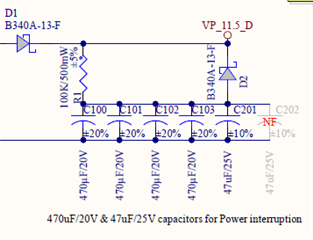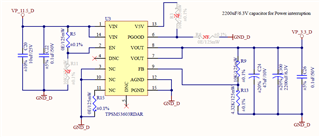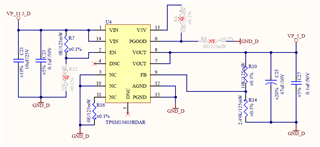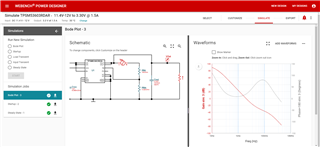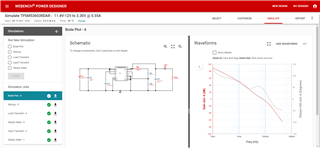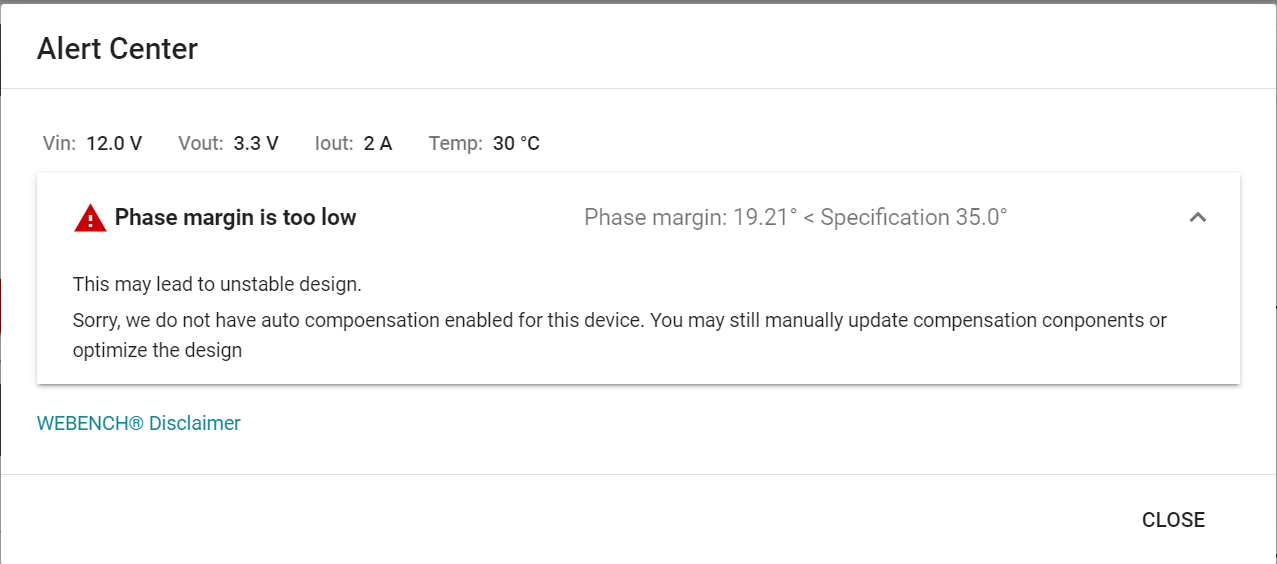Tool/software:
I am using 2 no.s of TPSM53603RDAR for generating 5V and 3.3V. The input is 12V DC. I have a power interruption requirement of 20ms on my device and I am planning to use a capacitor bank after 12V output, as an input to both the TPSM53603. I need some help with the calculations that should be done. Should I consider TPSM53603's efficiency while calculating the hold up capacitor value? Can you help me with the calculations?
Also, if I add a high value cap (say 2200uF) on the output 3.3V, is that going to affect the output? Is it recommended to have decoupling caps this big if I have some high consumption load just on the 3.3V line (about 1.5A) and not on the 5V line? How do I calculate the required decoupling capacitor values?


